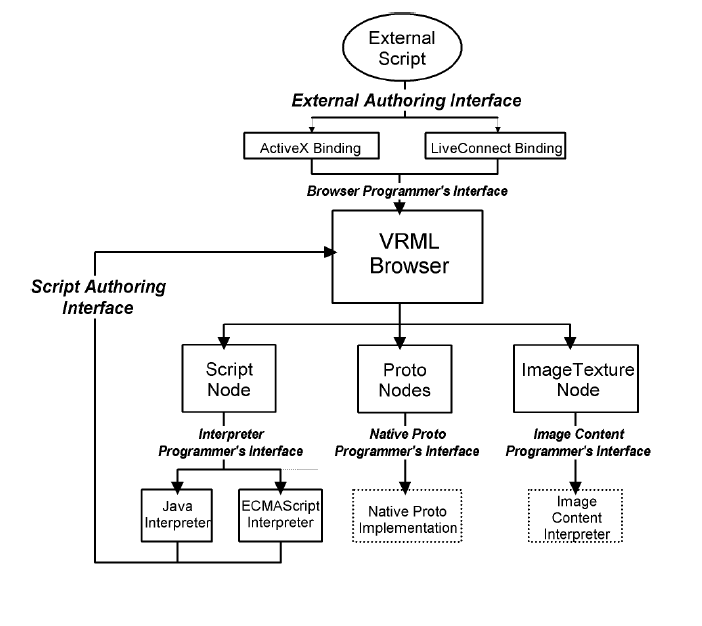VRML : Examples

-
A very simple example : a tree
-
Monaco : /lecture/ivr/Web3D/vrmlImagina/
-
Some demos from cortona : http://www.parallelgraphics.com/products/cortonamacosx
-
Nadeau's slide : "Introduction to VRML97"
VRML 2.0, which is the latest version of the well-known VRML format, is an ISO
standard (ISO/IEC 14772-1:1997). Having a huge installed base, VRML 2.0 has
been designed to support easy authorability, extensibility, and capability of
implementation on a wide range of systems. It defines rules and semantics for
presentation of a 3D scene.
Using any VRML 2.0 compliant browser, a user can simply use a mouse to navigate through a virtual world displayed on the screen. In addition, VRML provides nodes for interaction and behavior. These nodes, such as TouchSensor and TimeSensor, can be used to intercept certain user interactions or other events which then can be ROUTed to corresponding objects to perform certain operations.
Moreover, more complex actions can take place using Script
nodes which are used to write programs that run inside the VRML world. In addition
to the Script node, VRML 2.0 specifies an External Authoring Interface (EAI)
which can be used by external applications to monitor and control the
VRML environment. These advanced features enable a developer to create an interactive
3D environment and bring the VRML world to life.
